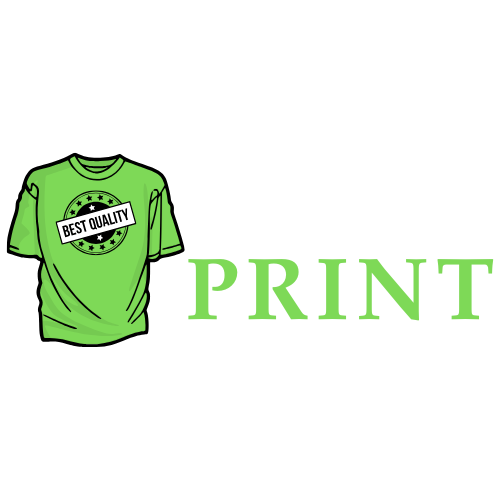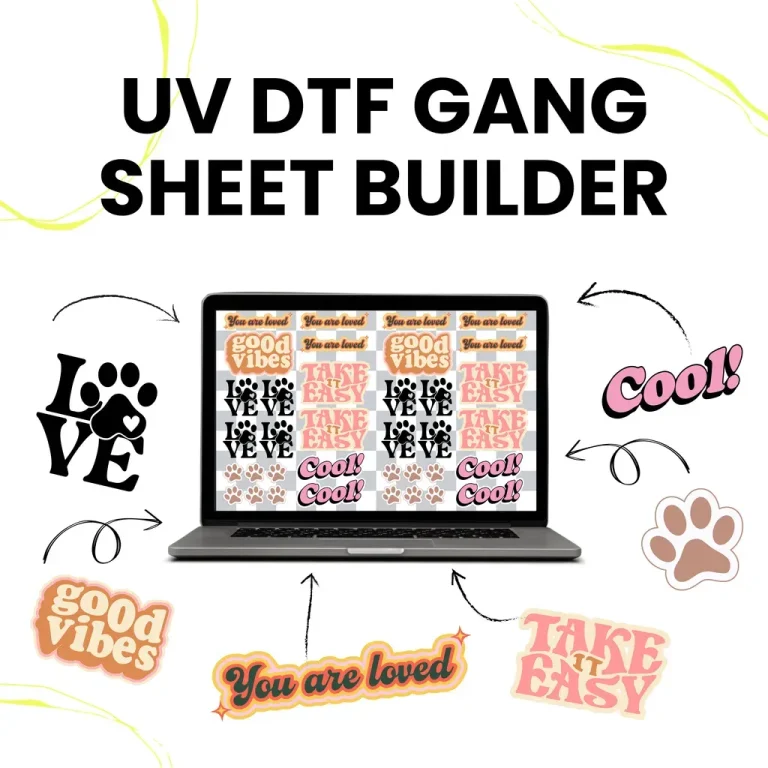The UV DTF Gangsheet Builder redefines how shops scale UV DTF printing by letting you place multiple designs on a single sheet and accelerate throughput without sacrificing precision. This approach enables designers and operators to plan layouts that maximize space while maintaining alignment and color consistency across runs. A robust hardware setup guides you through the printer, UV curing unit, alignment fixtures, and heat press that underpin repeatable results. Careful substrate selection, coatings, and adhesives influence adhesion, hand feel, and durability, emphasizing why testing across fabrics is essential. With a structured workflow, you can standardize margins, calibrations, and quality checks to turn multi-design gangsheet projects into predictable, scalable production across different volumes.
In practical terms, this is a multi-design transfer planning tool that groups several graphics onto one sheet to boost output. LSI-informed terminology helps describe it as sheet-optimization software for print-to-transfer workflows, where margins, bleed, and spacing are tuned for fast, repeatable cuts. Viewed as an integrated system, the printer, curing light, and press work together to maintain color fidelity and adhesion across substrates. Across fabrics, coatings, and adhesives, the balance of ink behavior, surface prep, and finishing steps determines durability and wash resistance. Adopting this approach helps teams scale production while keeping quality consistent from batch to batch.
Understanding the UV DTF Gangsheet Builder: A Cornerstone of Efficient UV DTF Printing
The UV DTF Gangsheet Builder is a strategic approach to maximize output by arranging multiple designs on a single sheet, then printing, curing, and transferring them in a synchronized workflow. This method aligns with the goals of UV DTF printing—higher throughput, better print consistency, and reduced handling steps.
By treating the gangsheet like a mini production line, designers can optimize color management, margins, and bleed across all designs, ensuring sharp edges and uniform adhesion on the substrate. Understanding how the gangsheet builder fits into ink compatibility and substrate variation helps maintain consistent results from sheet to sheet.
Hardware for UV DTF: Key Components to Support a Reliable Workflow
A robust UV DTF workflow relies on a combination of hardware capable of precise placement, rapid curing, and stable transfer. Core components include a DTF-ready or UV-capable printer, a UV curing unit, a gangsheet layout station, a heat press, and alignment fixtures to maintain registration.
Careful selection based on sheet size, substrate thickness, and the number of items per gangsheet reduces misregistration and downtime. Regular calibration and maintenance of the printer, curing unit, and heat press are essential to sustain repeatable results across runs.
DTF Inks Compatibility and Color Management in UV DTF Printing
DTF inks compatibility is the backbone of color fidelity and durability in UV DTF printing. UV-curable inks should be formulated for the chosen substrates and compatible with the adhesive layer used in DTF transfers; curing parameters, such as time and lamp intensity, are critical.
Swatch testing and a color-managed workflow using ICC profiles ensure tight color matching across the gangsheet. By optimizing ink density and post-curing handling, you can achieve smoother gradients and better abrasion resistance on diverse materials.
Material Compatibility for DTF: Substrates, Coatings, and Adhesives
Material compatibility governs adhesion, hand feel, and wash-fastness. Substrate types range from cotton and poly blends to coated fabrics, each reacting differently to UV DTF inks and adhesives.
Pre-treatments, coatings, and adhesive choices should be mapped in a material compatibility matrix that links substrates to recommended pre-treatments, adhesives, and curing settings. Considering environmental factors helps maintain consistent results across batches.
Designing and Optimizing Gang Sheets with the Gangsheet Builder for Throughput
Efficient gang sheet design hinges on margins, bleed, consistent spacing, and awareness of substrate orientation. A well-planned grid makes the printer, cutter, and heat press coordinate smoothly, increasing throughput while maintaining edge quality.
Prototype testing helps validate color balance and edge integrity before large runs. Where possible, automation for layout, calibration, and QA can reduce handling time and improve repeatability across the UV DTF workflow.
QA, Troubleshooting, and Best Practices for Consistent UV DTF Printing
A disciplined QA routine catches issues early and protects yield. Common concerns include color drift, ghosting or edge smearing, adhesion failures, and substrate distortion, all of which can be mitigated with proper calibration and stable curing.
To sustain long-term performance, document parameters, maintain a calibration schedule, build a substrate library, and train operators on hardware and material science. Incremental optimization with one-variable changes at a time keeps the UV DTF printing process predictable.
Frequently Asked Questions
What is a UV DTF Gangsheet Builder and how does it optimize UV DTF printing workflows?
A UV DTF Gangsheet Builder arranges multiple designs on a single gangsheet for UV DTF printing, then prints, cures, and transfers them in batches. It maximizes substrate use, reduces setup time, and boosts throughput while preserving color accuracy and adhesion when paired with proper hardware, inks compatibility, and material compatibility practices.
What hardware for UV DTF are essential when using a UV DTF Gangsheet Builder?
Key hardware includes a UV-capable printer (or a DTF-ready printer with a UV curing module), a reliable UV curing unit, a gangsheet layout station or caul sheet system, a heat press or transfer oven, alignment fixtures, and software to manage multi-design layouts, margins, and bleed. Regular calibration and maintenance support repeatable results across batches.
How do you ensure DTF inks compatibility in a UV DTF Gangsheet Builder workflow?
DTF inks compatibility hinges on ink chemistry that suits the chosen substrates and adhesive layer, proper curing times and lamp settings, and a color-managed workflow using ICC profiles. Run swatch tests on representative substrates, adjust ink density and curing, and monitor wash-fastness and abrasion to ensure reliable UV DTF printing results on gangsheet layouts.
What does material compatibility for DTF mean in a UV DTF Gangsheet Builder setup and how can you optimize it?
Material compatibility for DTF means selecting substrates, pre-treatments, and adhesives that work together with the UV DTF inks and transfers. Build a material compatibility matrix mapping fabrics and coatings to recommended pre-treatments and curing settings, and validate performance across all items on the gangsheet to prevent delamination or color shifts.
How should you design and optimize gang sheets for UV DTF printing to maximize throughput and maintain quality?
Design gang sheets by planning margins and bleed, maintaining consistent spacing, and aligning designs with substrate orientation. Test layouts with prototypes, and automate repetitive steps when possible to improve throughput. A thoughtful gangsheet strategy preserves edge quality and color balance while maximizing the number of designs per sheet in UV DTF printing.
What are common QA and troubleshooting steps in a UV DTF Gangsheet Builder process?
Establish a QA routine to catch issues early: monitor color drift with targets and ICC profiles, check for ghosting or edge smearing, verify adhesion and substrate distortion, and inspect equipment wear. When problems arise, recalibrate, adjust curing or press settings, and revise the gangsheet layout or substrate prep as needed.
| Topic | Key Points | Notes |
|---|---|---|
| Introduction | UV DTF Gangsheet Builder enables laying out multiple designs on one gangsheet to maximize output; integrates hardware, inks, and materials for consistent color, sharp details, and reliable adhesion. | Overview of the approach and goals. |
| Hardware considerations | DTF-ready or UV-capable printer, UV curing unit, gangsheet layout station, heat press; alignment fixtures/software; consider sheet size, substrate thickness, number of items; calibration and maintenance. | Focus on the physical setup that enables repeatable, high-quality runs. |
| Inks compatibility and color management | UV-curable inks suitable for selected substrates; ink chemistry, substrate interaction, curing parameters, print permanence; use ICC profiles and color targets. | Ensures color fidelity and durability across gangsheet designs. |
| Material compatibility | Substrate types, pretreatments/coatings, adhesive compatibility, durability/wash-fastness, environmental considerations; create a material compatibility matrix. | Guides substrate selection and processing conditions for reliable results. |
| Designing and optimizing gang sheets | Plan margins and bleed, maintain consistent spacing, align with substrate orientation, prototype layouts, automate where possible. | Maximizes sheet efficiency while preserving print quality. |
| Troubleshooting and QA | Color drift management, ghosting/edge smearing checks, adhesion failures assessment, substrate distortion handling, mechanical wear monitoring; implement QA routine. | Keeps production predictable and scalable. |
| Best practices for ongoing optimization | Document parameters, maintain calibration calendar, build a substrate library, iterate changes incrementally, provide operator training. | Supports continuous improvement and consistency. |
| Conclusion | A UV DTF Gangsheet Builder represents a strategic approach to high-volume, high-quality transfer printing by aligning hardware, inks, and materials; emphasizes testing, documentation, and ongoing optimization. | End of overview. |
Summary
UV DTF Gangsheet Builder is a forward-looking approach to high-volume, high-quality transfer printing that aligns hardware, inks, and materials into an efficient workflow. This descriptive overview highlights how coordinated hardware choices, ink compatibility, and substrate considerations come together to maximize sheet usage, ensure color fidelity, and achieve durable adhesion across a variety of fabrics and coatings. By following structured design practices, rigorous QA, and ongoing optimization, practitioners can scale production while maintaining consistent results across multiple designs on a single gangsheet.

